Introduction
The traditional view of supply chain management in the FMCG (Fast Moving Consumer Goods) in the Middle East has significantly changed because of the global financial crisis (Hugos 2011). FMCG companies operating in the Middle East experience fierce competition in the production, distribution and selling of low priced fast moving consumer goods. The production, distribution, and selling of fast moving consumer goods for many years have relied on traditional supply chain activities to move raw materials and products from the manufacturer to the consumer (Alvarez, Pilbeam & Wilding 2010).
The modern business environment demands a radical shift from the traditional supply chain management systems to the more robust future supply chain systems. The rationale for shifting from the traditional supply chain management systems to the more robust management systems have been because of competition in the industry, the nature of the goods in the industry, and the need to optimise the supply systems to achieve high levels of efficiency and effectiveness. One of the companies involved in the FMCG in the Middle East is Nestlé. Nestlé was established in 1867 in Switzerland and has grown to become the world’s number one brand in FMCG industry. The company has a presence in 81 countries, 522 factories distributed globally, and specialises in 700 products (Alvarez, Pilbeam & Wilding 2010).
History of the Supply Chain
Optimal operations and competiveness in the FMCG industry are based on the efficiency of the logistics and supply chain activities. Traditional strategic supply chain maps used in the FMCG industry have been defined by some elements, which have compelled companies operating in the industry to go back to the drawing board and create new logistics and supply chain management strategies for the purpose of competiveness and efficiency. From a historical perspective, firms operating in the industry emphasised on vertical integration, where the supply chain was managed within the ownership of the main firm. The companies were enterprise oriented and the flow of warehousing activities was based on interruptions and cost optimisation per each enterprise (Hugos 2011).
The Planning, risk identification, and relationships across the units were enterprise oriented. The companyies could source for raw materials, manufacture, market, and sell their product without involving other companies. Any company in the supply chain concentrated their efforts on working towards meeting the goals of the parent company. Barratt (2004, p.45) argues that the supply chain was concentrated into one company based on previous models.
According to Barratt (2004, p.45), vertical integration was the sole architecture underlying the operations and supply chain activities. The problems with vertical integration included huge internal coordination costs, higher switching costs, and weak motivation to achieve good staff performance. Lack of expertise, the presence of anti-trust laws, and the use of inferior technology for non-core business purposes characterised the traditional supply chain industry (Barratt 2004). Successive growth experienced investments in the heavily acquisition of new supply chain systems and a radical departure from the traditional supply chain models.
Over the last 20 years, FMCG companies have undergone radical changes by focusing on developing supply strategies and core competencies. Such new supply chain management strategies focus on global integration of a network of suppliers, manufacturers, distribution centres, retailers, and service centres. Current supply chain management strategies have adopted different models such as the contract manufacturing model, enhanced vertical integration strategies, electronic manufacturing services model, and the virtual supply chain management strategy.
Traditional supply chain management strategies
The traditional supply chain model is shown in the diagram below. Traditional models were characterised by the manufacturer, the distributor, and the retailer. Information was the most important element in the manufacturing phase, contracts were important at the distribution stage, and materials were of significant importance at the retail stage.
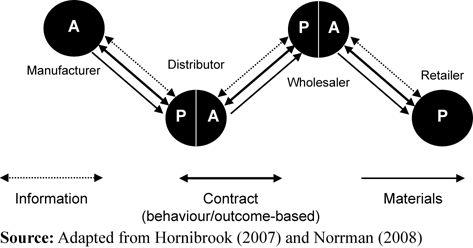
In the above model, the company is responsible for the planning and forecasting consumer needs. In the traditional model, firms kept valuable information as trade secrets. Traditional boundaries were kept between suppliers, manufacturers, and consumers and remained intact. It is important to note that each party in the traditional supply chain system focused on core efficiencies and strategies to generate optimum profits by concentrating their efforts to ensure optimum use of resources. Contracts formed a significant part of the legal tussles and issues which proved to be very expensive (Hugos 2011).
Here, the activities in the supply chain were based on demand and supply models. Channel partners were not harmonised in the traditional supply chain strategies, which focused on individual performance, without factoring how the decisions could affect the performance of their partners in the supply chain system. Traditional methods lacked long term and short term strategic plans for growth. In addition to that, the traditional model is supported on legacy systems which could not be integrated to produce an efficient and effective supply chain map. The following graph shows the problems inherent in the traditional supply chain management strategies. The problems include low customer satisfaction, high distribution costs, lack of proper communication, and high product unreliability.
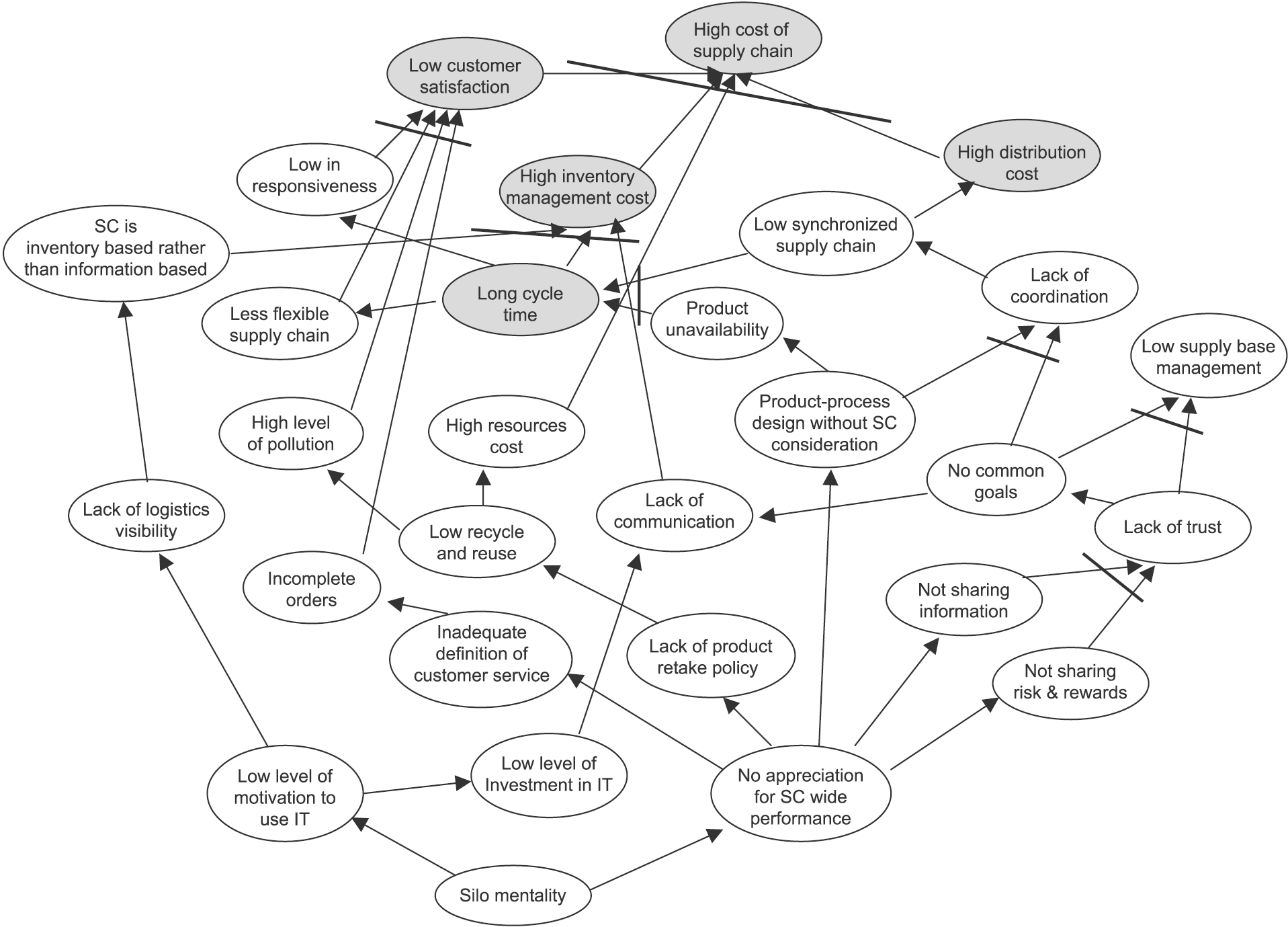
Current supply chain strategy
Changes in the economic landscape, fierce competition and threats from new entrants into the industry coupled with changes in consumer behavior and new innovative technologies have accumulative effects on the supply chain of companies operating in FMCG industry (Alvarez, Pilbeam & Wilding 2010).
Examples of companies which have been successful in their supply chain management strategies are Unilever, Nestlé, and Coca-Cola. Nestlé has registered successful revenue growth in the provision of quality services, and is actively engaged in working to create value for customers. The company has strategies to create new consumer products and brands suited to the needs of the market, and have a strategy of investing in new and upcoming manufacturing and distribution methods to keep abreast with its growth strategy. In addition, the company has automated the provision of services. It has developed a shorter product lifecycle, with a faster break-even point to increase profitability and reduce the cost of her products. A modern supply chain management process is shown in the diagram below. The chain consists of suppliers, inbound and outbound elements, operations and customers (Alvarez, Pilbeam & Wilding 2010).
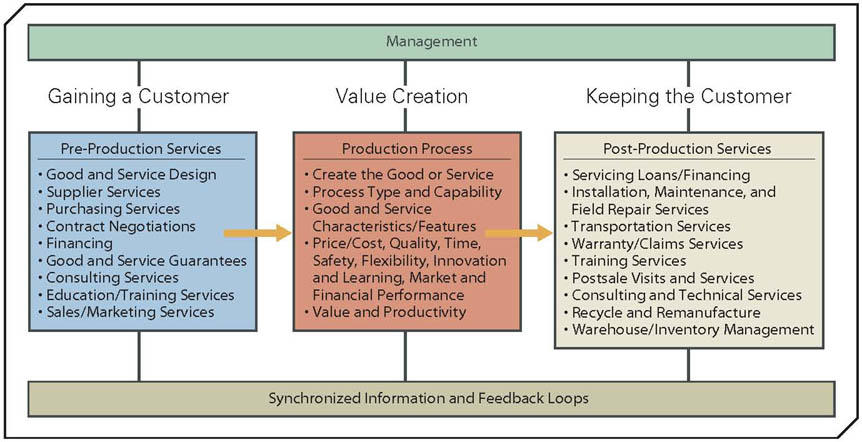
Challenges overcomed during the development phase
Success in the FMCG industry depends on the successful implementation of supply chain and logistics strategies, which address the unique challenges in the industry. The challenges include the difficult in prioritising supply chain efforts to improve the delivery of products to the target market on time, the need to identify the best areas to deploy expert resources, and the performance lagging problems.
Performance lagging revolves around the need to provide the customer with the right product and satisfy their needs and the need to optimise performance to ensue efficient delivery of services. Another challenge to overcome was the result of a complex supply chain system that requires the provision of services for a wide variety of products. The industry has a unique structure and a multitude of players, which influence the demand and supply for her products. One critical challenge that the industry experienced in its growth was the provision of next generation supply chain systems, which formed the basis for the tension between the demand and supply. To overcome the challenges, the FMCG industry engaged earlier with policy makers and the governments to put in place structures to support the implementation of the next generation supply chain management strategies.
Some of the challenges experienced in the FMCG industry over the years include the problem of mixing of supply chain models, cost containment, customer intimacy, risk, visibility, and the effects of globilisation. Cost structures were contained during the global economic crisis by integrating cost reduction strategies including commoditisation and value chain addition activities to the supply chain management system (Stadtler & Kilger 2010).
Different models fit into different process and a universal model fits well into the operations of the parent company. The adoption of a more robust supply chain model has provided solutions to the long standing problems experienced in the FMCG industry. Another challenge is globilisation (Stadtler & Kilger 2010). Global procurement networks are difficult to manage because of the variations across countries including legal obligations, reliability, quality, and availability. Lead time, quality of products and services, and the problem of tracking and disposing obsolete inventory management systems in the FMCG industry.
An economic analysis shows that the company has the challenge of developing adequate capacity to grow a big customer base by factoring risk, legal, and bureaucratic issues.
In the coming years FMCG companies such as Nestlé face the new challenges of climate change, increased political momentum, cost efficiency, and on-shelf availability of products and services are additional future challenges. To address the increasing number of new changes, the companies have developed strategic supply chain models to address such problems (Stadtler & Kilger 2010).
Success factors for the industry
Success factors in the FMCG industry have been demonstrated by Nestlé improved performance, which has shown significant continuous growth in value shares, with a record growth of 1.5 billion consolidated shares by 2013 (Alvarez, Pilbeam & Wilding 2010). The company’s strategy is defined by internal and external partners, relationship, customer satisfaction, and a 55% market growth. The success of the company is based on the provision of a range of consumer products, market, product, and geographic segmentation. The “company has a market capitalisation base of 200 billion US dollars all over the world” (Alvarez, Pilbeam & Wilding 2010).
Currently the company has a future strategy which is based on value based innovation, new market penetrations, and innovative products for new markets. The company’s strategic pillars are defined by good quality product offerings, one company; one culture, single portfolio, and effective customer experience. Nestle has grown in the Middle East to be the biggest company in the FMCG industry (Alvarez, Pilbeam & Wilding 2010).
Aligning supply chain with business strategy
To move from its current position and focus on the future as the winning formula for success, the company intends to align its supply chain with its strategy by focusing on physical supply chain innovation strategy (Horvath 2001). The company intends to achieve excellence through collaborations by introducing into its supply chain architecture inventory optimisations systems, and by ensuring that store logistics including store visibility and shopper interactions are implemented into the supply chain of the company. The future strategic supply chain must operate in a sustainable manner by focusing on the customer (Horvath 2001).
The new supply chain strategy provides the company with an enhanced collaboration model. The company has experienced senior management involvement to align key performance indicators with internal organisational performance metrics that are transparent and visible throughout the supply chain of the company (Horvath 2001).
The current business strategy is shown below.
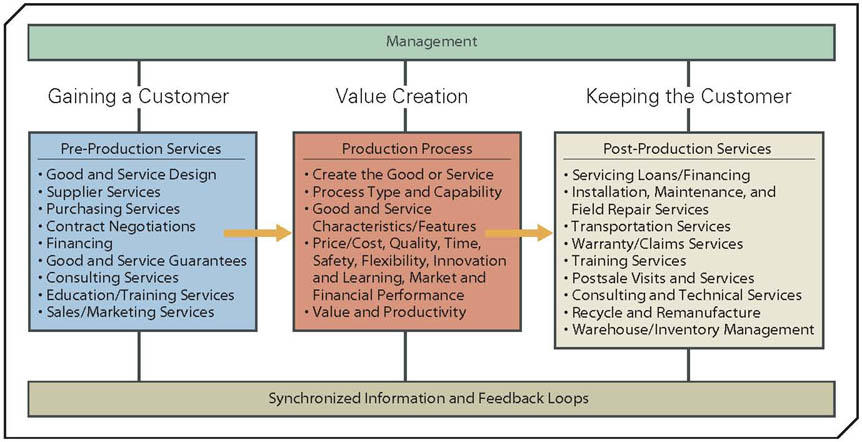
A future supply chain, which integrates strategy, is shown in the following diagram.
End to end process architecture
The key end to end process supply chain architecture is defined by a number of elements (Horvath 2001). Typically, the process can only be effective and can enhance the performance of the company based on the processes that go into the model. The key elements in the supply chain end to end process architecture includes planning, balancing the demand and supply of products and services, and aligning the business strategies into the supply chain of the company. Once the planning component has been implemented successfully, the execution phase follows. In the execution phase, the organisation prepares to source for products and services to satisfy the needs of her customers. The key elements included in this phase include the strategic role of the company to make, deliver, and products to the customer.
Design a high performance supply chain organizations
The high performance supply chain model for organisations functions on the supply chain excellence levers, which include customers and products at the service level. Customer requirements are factored at the service level to ensure they are fulfilled at the product level. Complexity and standardisation are removed from the system. At the network level, the levers of excellence to factor include customised product flow and shared logistics hub.
Build the right collaborative model
Nestle faces fierce competition from her rivals and to ensure the market share is maintained, the company has developed collaborations with different supply chain systems. The key elements of the model include information sharing which included a number of elements (Stadtler & Kilger 2010). The elements which fall into the information category include demand forecasts for products, overall inventory policy for the company, delivery schedules, order status, on hand inventory levels, and inventory holding costs. The model elements are optimised for competiveness. The next element in the model is the decision synchronisation, which factors joint plans for various activities such as consultation on pricing joint demand forecasts, and joint resolution on order exceptions (Stadtler & Kilger 2010). The key driving factors for the model include low prices, high quality products, dependable product delivery, product innovation, and improved organisational performance.
Drawing about the strategic supply chain process map
The model shown below is based on the modified ISO 9001:2000 interpretation model.
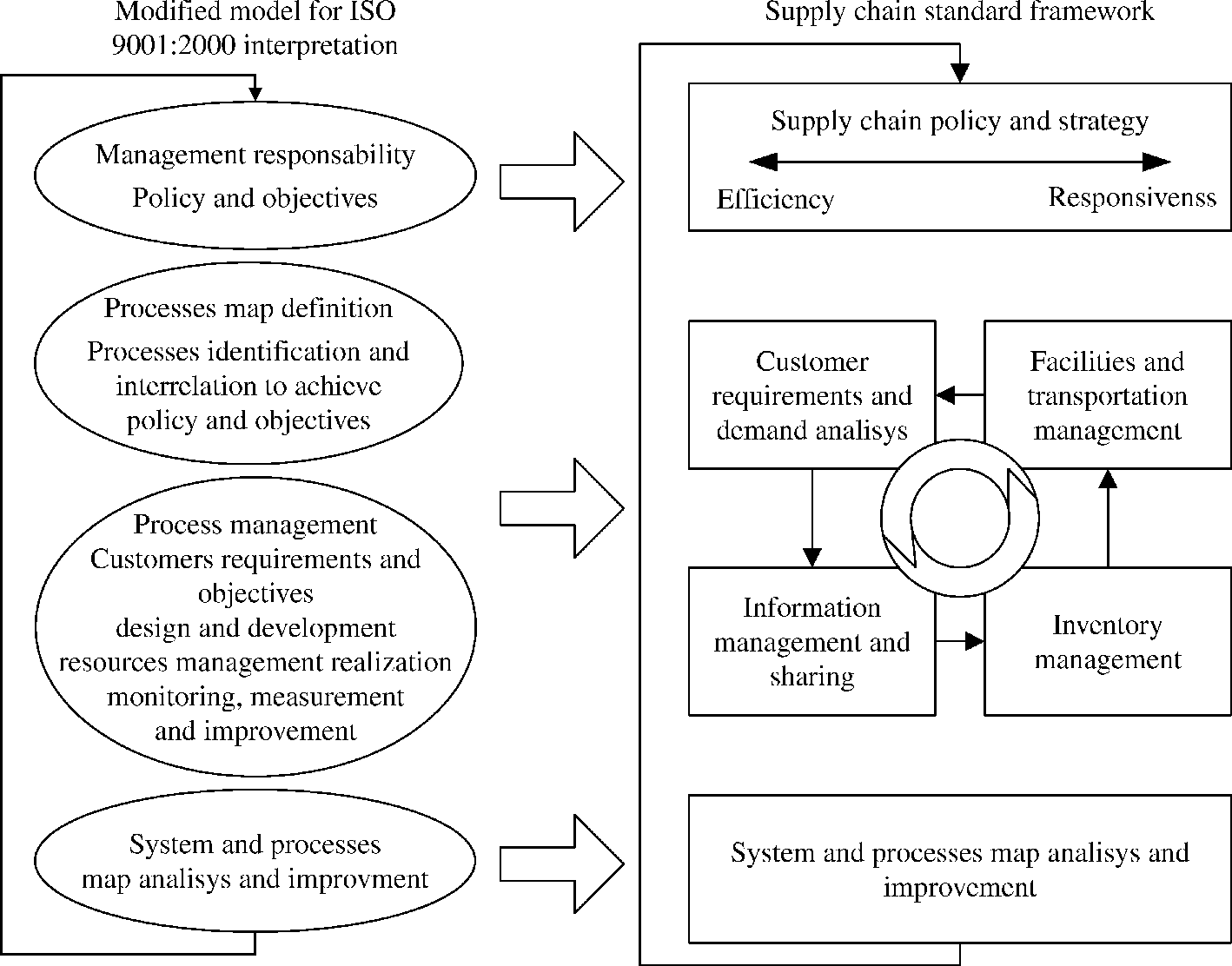
Major findings, limitations
A radical shift into the new collaborative supply chain model from the traditional model, which emphasised on customising the supply chain to fit into the supply chain needs of the parent company, has been witnessed. The companies have emphasised on service and product excellence by factoring supply chain excellence levers at the customer, network, and processes levels. Organisations use supply chain models with inherent problems such as poor documentation of supply chain activities, lack of standardised templates for performing supply chain activities, and poor spending priorities.
Implications
Implications include inconsistent management of the suppliers, maverick spending, risk for regulatory compliance, and missing the significant potential for cost reduction. Other implications include poor integration of the business level strategy into the supply chain model, improved scalability, lack of excellent in processes, poor supplier performance measures, and demand management for the collaborating entities in the supply chain system.
Solutions
Solutions range from the use of a high performance model which integrates the key performance enhancements elements such as proper planning based on a deep and complete mapping and understanding of the supply chain needs of the companies. In addition, the plan should consist of defined processes with top level management commitment. The optimal use of the internal supply chain to enhance supplier capabilities and recommended use of performance measures to manage the supply chain performance are contributing factors to the success of companies in the FMCG industry. Building flexibility into the supply chain using the right people, processes, and technology will contribute to the excellence in performance of the supply chain. In addition to that, the elimination of supply chain shortages reduction of inventory costs, reduction of logistics costs, and a full integration of the end to end supply chain process model.
Recommendations and Conclusion
A radical departure from the traditional supply chain management strategies has enabled the growth of the FMCG companies in the competitive business environment. Nestle is an existing example of a company that has recorded strategic growth by integrating the key elements of planning, delivery dependability, information sharing, decision synchronisation, sales forecasting, and strategic demand and supply activities.
To eliminate the weaknesses and problems discovered in previous and current models, the study recommends the company to develop an integrated model which factors the best practises of the traditional models with the current supply chain models to optimise performance at all levels of product and service delivery to develop a future supply chain model. Outcomes include an elimination of supply shortages, which could results in customer satisfaction, short cycle and lead times, and the integration of common goals to achieve supply chain efficiencies in the FMCG industry as shown below.
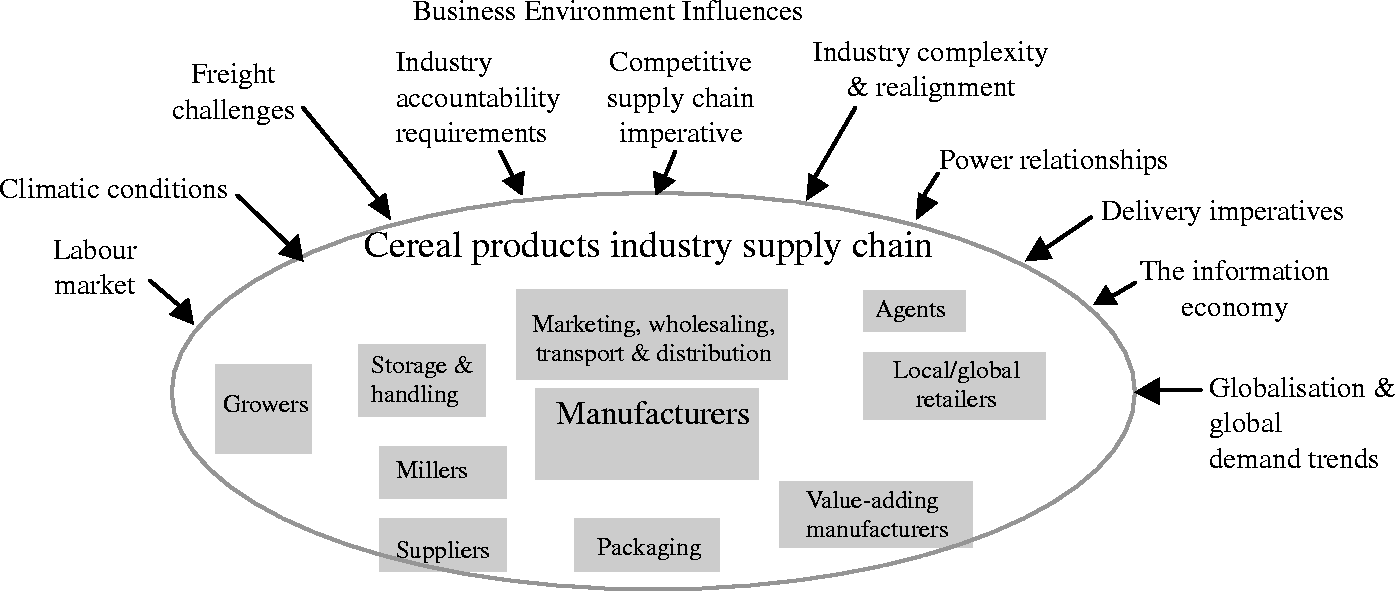
References
Alvarez, G, Pilbeam, C & Wilding, R 2010, Nestlé Nespresso AAA sustainable quality program: an investigation into the governance dynamics in a multi-stakeholder supply chain network. Supply Chain Management: An International Journal, vol. 15, no. 2, pp. 165-182. Web.
Barratt, M 2004, ‘Understanding the meaning of collaboration in the supply chain. Supply Chain Management’, An International Journal, vol. 9, no.1, pp. 30-42. Web.
Horvath, L 2001, ‘Collaboration: the key to value creation in supply chain management. Supply Chain Management’, An International Journal, vol. 6, no. 5, pp. 205-207. Web.
Hugos, MH 2011, Essentials of supply chain management, John Wiley & Sons, New York. Web.
Stadtler, H & Kilger, C 2010, Supply Chain Management and Advanced Planning: Concepts, Models, Software, and Case Studies, John Wiley & Sons, New York. Web.